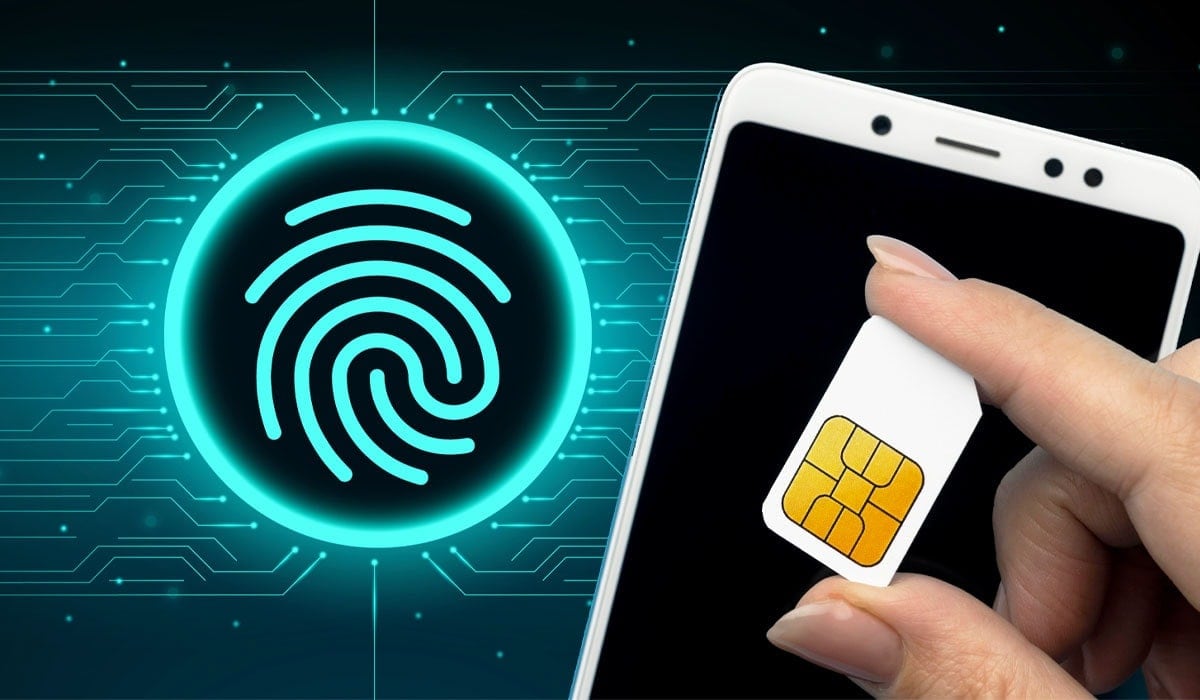Introduction
The SIM card, a small yet powerful component, has become an integral part of modern mobile technology. Its impact on the way we communicate, connect, and access information cannot be overstated. The history and evolution of the SIM card are not only fascinating but also crucial in understanding the progression of mobile devices and their capabilities.
From its humble beginnings to its current ubiquity, the SIM card has played a pivotal role in shaping the landscape of mobile communication. This article delves into the intriguing journey of the SIM card, exploring its invention, evolution, and the profound impact it has had on mobile technology.
The SIM card, short for Subscriber Identity Module, is a tiny, thumbnail-sized card that stores crucial information about a mobile subscriber, including their identity, network authentication, and contact lists. This small but mighty piece of technology has revolutionized the way we use mobile devices, enabling seamless connectivity and personalized access to mobile networks.
As we embark on this exploration of the SIM card, we will uncover its origins, the innovative minds behind its creation, and the significant milestones that have propelled it to the forefront of mobile technology. Join us on this captivating journey through the history and evolution of the SIM card, and gain a deeper appreciation for the impact it has had on the way we communicate and interact in the digital age.
The Early Days of the SIM Card
In the early days of mobile communication, the concept of a portable and personalized subscriber identity was a revolutionary idea. The need for a secure and portable method of authenticating mobile subscribers led to the development of the Subscriber Identity Module (SIM) card. The origins of the SIM card can be traced back to the late 1980s, a time when mobile technology was rapidly advancing, and the demand for seamless connectivity was on the rise.
The pioneering work of smart card technology laid the groundwork for the development of the SIM card. Smart cards, which were already being used for various applications such as banking and security access, inspired the creation of a similar concept for mobile communication. This led to the birth of the SIM card, a portable and secure module that could be inserted into mobile devices to store subscriber information and enable access to mobile networks.
The early iterations of the SIM card were primarily aimed at providing a secure and standardized method of identifying mobile subscribers across different networks. This was a significant advancement, as it allowed subscribers to switch between mobile devices while retaining their identity and network preferences. The SIM card's ability to store subscriber information, including contact lists and network authentication data, paved the way for a more personalized and portable mobile experience.
Furthermore, the introduction of the SIM card brought about a fundamental shift in the mobile communication landscape. It empowered mobile subscribers with the freedom to choose their devices independently of their network provider, marking a departure from the previously rigid coupling of devices and networks. This newfound flexibility and portability laid the foundation for a more dynamic and consumer-centric mobile ecosystem.
As the demand for mobile communication continued to surge, the SIM card evolved to accommodate new technologies and functionalities. The early days of the SIM card set the stage for its remarkable journey, shaping the way mobile devices would be used and personalized in the years to come. The innovative concept of a portable subscriber identity module had taken its first steps, laying the groundwork for the transformative impact it would have on mobile technology.
The early days of the SIM card marked a pivotal moment in the history of mobile communication, setting the stage for its widespread adoption and the profound impact it would have on the way we connect, communicate, and interact in the modern world.
The Invention of the SIM Card
The invention of the SIM card marked a significant leap forward in the realm of mobile communication technology. The pioneering work behind the creation of the SIM card can be attributed to a collaborative effort involving several key innovators and industry leaders. One of the pivotal figures in the development of the SIM card was a German engineer named Dr. Helmut Gröttrup, who played a crucial role in the advancement of mobile communication technology.
In the late 1980s, Dr. Gröttrup, along with his team at Giesecke+Devrient, a leading provider of smart card technology, embarked on a groundbreaking endeavor to develop a portable and secure method of authenticating mobile subscribers. This endeavor led to the conception of the Subscriber Identity Module (SIM) card, which would revolutionize the way mobile devices interacted with network providers.
The SIM card, with its compact form factor and innovative data storage capabilities, was designed to securely store subscriber information, including unique identifiers and authentication data. This not only provided a standardized method of identifying mobile subscribers but also enabled seamless connectivity across different mobile networks.
The SIM card's invention represented a paradigm shift in the mobile communication landscape, empowering subscribers with the flexibility to switch devices while retaining their identity and network preferences. This breakthrough innovation laid the foundation for a more personalized and dynamic mobile experience, setting the stage for the widespread adoption of mobile devices across the globe.
Furthermore, the international standardization of the SIM card by the European Telecommunications Standards Institute (ETSI) further solidified its position as a fundamental component of mobile technology. This standardization ensured interoperability and compatibility across various mobile devices and network providers, fostering a more open and consumer-centric mobile ecosystem.
The invention of the SIM card not only revolutionized the way mobile subscribers interacted with their devices but also paved the way for future advancements in mobile technology. Its impact transcended traditional boundaries, shaping the evolution of mobile communication and laying the groundwork for the interconnected digital world we live in today.
The innovative spirit and collaborative efforts that culminated in the invention of the SIM card exemplify the transformative power of technology and its ability to redefine the way we communicate and connect. This pivotal invention continues to influence the trajectory of mobile technology, driving innovation and shaping the future of mobile communication.
The invention of the SIM card stands as a testament to human ingenuity and the relentless pursuit of progress, inspiring a new era of mobile connectivity and reshaping the way we engage with the digital landscape.
The Evolution of the SIM Card
The evolution of the SIM card has been a remarkable journey marked by continuous innovation and adaptation to the evolving landscape of mobile technology. From its inception as a portable subscriber identity module to its current multifaceted functionalities, the SIM card has undergone significant transformations, shaping the way mobile devices interact with networks and subscribers.
The early iterations of the SIM card were characterized by their primary function of storing subscriber information and enabling network authentication. However, as mobile technology advanced, so did the capabilities of the SIM card. The introduction of smaller form factors, such as the micro-SIM and nano-SIM, allowed for greater flexibility in device design and paved the way for slimmer and more compact mobile devices.
Furthermore, the evolution of the SIM card saw the integration of advanced security features, including enhanced encryption and authentication protocols, to safeguard subscriber data and protect against unauthorized access. This heightened focus on security and privacy reinforced the role of the SIM card as a trusted and reliable component in mobile communication.
The advent of the embedded SIM (eSIM) represented a significant milestone in the evolution of the SIM card, offering a virtualized and programmable solution that eliminated the need for physical SIM cards. The eSIM's ability to store multiple operator profiles and be remotely activated revolutionized the way mobile devices were provisioned and connected to networks, ushering in a new era of flexibility and convenience for subscribers.
Moreover, the evolution of the SIM card has extended beyond traditional mobile devices to encompass a wide range of connected devices in the Internet of Things (IoT) ecosystem. The emergence of IoT-specific SIM cards tailored to the unique requirements of connected devices has further expanded the versatility and applicability of SIM card technology.
As mobile technology continues to advance, the evolution of the SIM card remains a dynamic and ongoing process, with the emergence of concepts such as integrated SIM (iSIM) and advancements in remote SIM provisioning (RSP) shaping the future trajectory of SIM card technology.
The evolution of the SIM card stands as a testament to its enduring relevance and adaptability in an ever-changing mobile landscape, reflecting its pivotal role in enabling seamless connectivity, personalized experiences, and secure communication across a diverse array of devices and applications.
The Impact of the SIM Card on Mobile Technology
The SIM card has had a profound and far-reaching impact on the landscape of mobile technology, shaping the way we communicate, connect, and interact with our devices. Its influence extends beyond the realm of traditional communication to encompass a wide array of technological advancements and societal transformations.
One of the most significant impacts of the SIM card is its role in facilitating seamless connectivity and personalized experiences for mobile subscribers. By securely storing subscriber information and network authentication data, the SIM card enables individuals to effortlessly switch between devices while retaining their identity and network preferences. This flexibility has empowered users to personalize their mobile experience, fostering a sense of ownership and control over their devices.
Moreover, the standardization of the SIM card has played a pivotal role in promoting interoperability and compatibility across different mobile devices and network providers. This has created a more open and consumer-centric mobile ecosystem, allowing individuals to choose their devices independently of their network provider and seamlessly transition between networks with ease.
The security and privacy features embedded within the SIM card have also had a profound impact on mobile technology. By implementing robust encryption and authentication protocols, the SIM card has served as a trusted and reliable guardian of subscriber data, protecting against unauthorized access and ensuring the confidentiality of sensitive information. This heightened focus on security has instilled confidence in mobile users, paving the way for the widespread adoption of mobile devices for a myriad of personal and professional applications.
Furthermore, the evolution of the SIM card, particularly with the introduction of the eSIM, has revolutionized the provisioning and connectivity of mobile devices. The eSIM's virtualized and programmable nature has streamlined the process of activating and managing mobile subscriptions, offering unparalleled convenience and flexibility for subscribers and device manufacturers alike.
The impact of the SIM card extends beyond traditional mobile devices to encompass the burgeoning Internet of Things (IoT) ecosystem. The integration of SIM card technology into IoT devices has facilitated seamless connectivity and data exchange, unlocking new possibilities for smart homes, connected vehicles, and industrial automation.
In essence, the SIM card has been a catalyst for innovation, enabling a more dynamic, personalized, and secure mobile experience. Its impact on mobile technology transcends mere connectivity, influencing the way we live, work, and interact with the digital world, and continues to shape the future of mobile communication and connectivity.
Conclusion
The journey of the SIM card, from its humble beginnings to its current ubiquity, is a testament to the transformative power of technology and human ingenuity. The invention and evolution of the SIM card have reshaped the landscape of mobile communication, leaving an indelible mark on the way we connect, communicate, and interact in the digital age.
The early days of the SIM card laid the groundwork for its pivotal role in mobile technology. Its innovative concept of a portable subscriber identity module not only provided a standardized method of identifying mobile subscribers but also empowered users with the freedom to choose their devices independently of their network provider. This newfound flexibility and portability marked a significant departure from the rigid coupling of devices and networks, setting the stage for a more dynamic and consumer-centric mobile ecosystem.
The invention of the SIM card, spearheaded by the visionary work of Dr. Helmut Gröttrup and his team at Giesecke+Devrient, represented a paradigm shift in mobile communication technology. The compact form factor and innovative data storage capabilities of the SIM card revolutionized the way mobile devices interacted with network providers, paving the way for a more personalized and dynamic mobile experience.
The evolution of the SIM card has been a testament to its enduring relevance and adaptability in an ever-changing mobile landscape. From the introduction of smaller form factors to the advent of the embedded SIM (eSIM) and IoT-specific SIM cards, the SIM card has continually evolved to meet the demands of advancing technology, shaping the future trajectory of mobile communication.
The impact of the SIM card on mobile technology has been profound and multifaceted. Its role in facilitating seamless connectivity, promoting interoperability, and safeguarding subscriber data has empowered individuals and transformed the way we engage with our devices. The introduction of the eSIM has further revolutionized the provisioning and connectivity of mobile devices, offering unparalleled convenience and flexibility for subscribers and device manufacturers.
In conclusion, the SIM card stands as a symbol of innovation and progress, driving the evolution of mobile communication and connectivity. Its impact transcends traditional boundaries, influencing the way we live, work, and interact with the digital world. As we continue to embrace the advancements in mobile technology, the legacy of the SIM card remains a testament to the transformative power of technology in shaping the future of communication and connectivity.

























